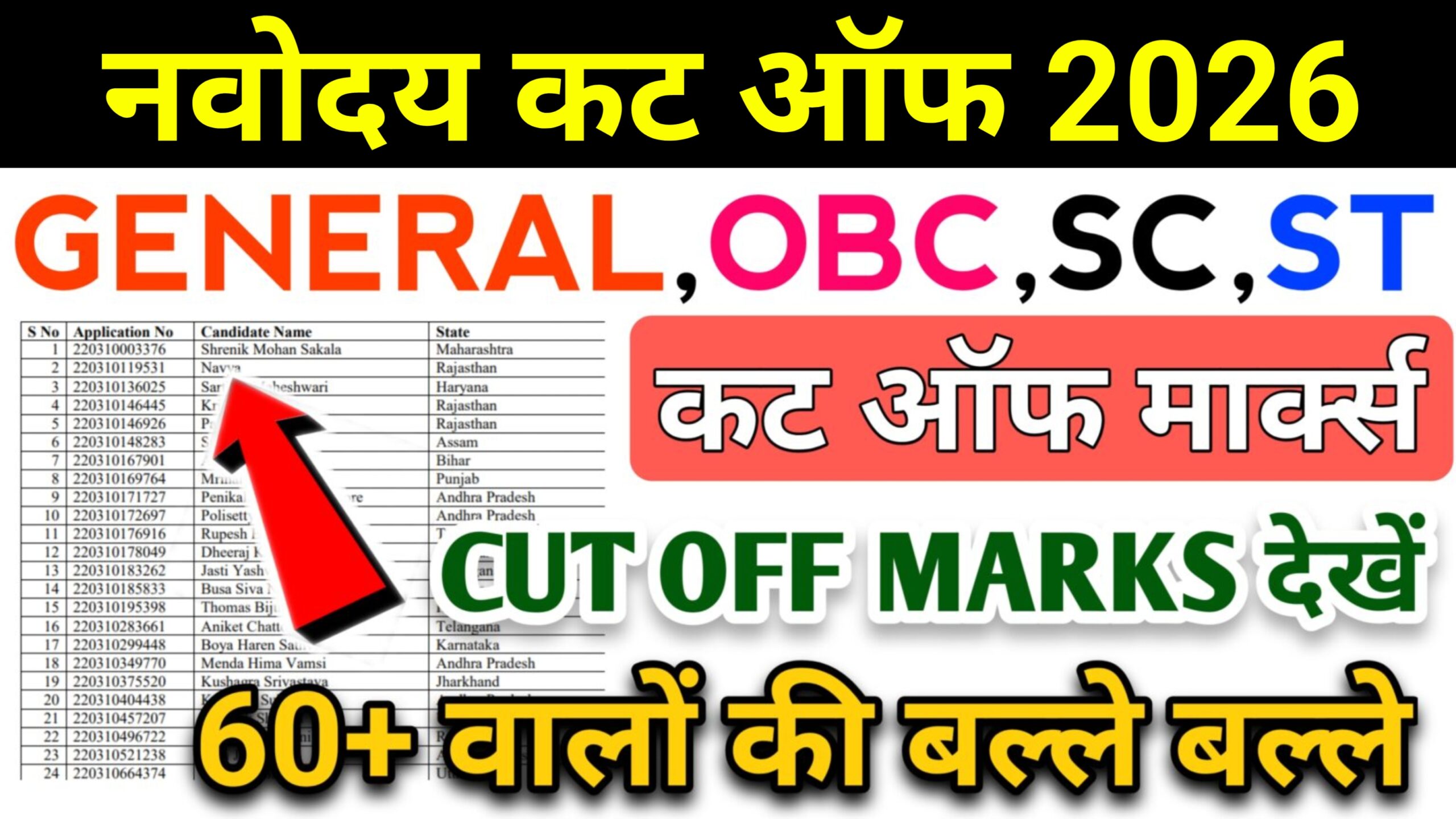
Understanding the Cut-Off for Navodaya Vidyalaya Samiti (JNV) Admission 2026
Admission into the prestigious residential schools run by JVS (Jawahar Navodaya Vidyalaya Samiti) is highly competitive. One of the key barometers of success is the cut-off marks for the entrance test (called the Jawahar Navodaya Vidyalaya Selection Test or JNVST). In this blog, we will cover:
-
What the cut‐off means and how it is determined
-
The expected cut‐off marks for 2026
-
Factors influencing the cut‐off
-
How students and parents should think about aiming for the cut‐off
-
Some actionable preparation tips
JNVST CUT OFF 2026 CLASS 6 ( QUESTION KITNE SAHI HONE CHAIYE )
GENERAL |
76-80 |
OBC |
75-80 |
SC |
72-80 |
ST |
68-80 |
What is the JNV Cut-Off and How it’s Determined
The cut‐off is the minimum score a candidate needs to achieve (or exceed) in the JNVST to be eligible for selection to a JNV school. It is not a fixed number for all districts or categories; instead, it is influenced by several factors:
-
Number of applicants in a particular district/zone
-
Difficulty level of the exam in that year
-
Number of available seats (for example, seats for rural vs urban, category wise)
-
Reservation norms (General, OBC, SC, ST, girls quota, etc.)
-
Performance distribution of students
For example, for the 2025 session, the official cut‐off list for Class 6 had a block-wise/reservation-wise variation even within the same district.
Also, the 2026 admission schedule shows that the exam is being conducted in two phases (for Class 6) in December 2025 and April 2026. This may also influence how cut‐offs are structured.
In short: the cut‐off is a dynamic benchmark, not a static “standard” you can count on year after year.
Expected Cut-Offs for 2026
While the official cut‐offs for 2026 may not yet be fully released or consolidated district‐wise, based on recent trends and publicly shared expected ranges, here are the ballpark figures that a student should be aware of:
For Class 6 admission
-
General category: ~ 73% marks (approx)
-
OBC: ~ 69%
-
SC: ~ 63%
-
ST: ~ 58%
-
Key takeaways for 2026
-
Expectation for General category is in the 80-85 range for many cases.
-
The cut‐offs for SC/ST are significantly lower than General, reflecting reservation norms, but still competitive.
-
Urban/rural, block/district differences may shift the exact numbers up or down.
Factors That Could Affect the 2026 Cut-Offs
-
Exam difficulty: If the paper is tougher, the cut‐off may drop; if easier, it may rise.
-
Volume of candidates: More applicants → potentially more competition → higher cut‐off.
-
Seats available: If fewer seats (or more seats vacant) in particular district/zone, the cut‐off may differ.
-
Reservation & quotas: Rural quota (75% seats in rural areas for JNVs) means students from rural areas may see different thresholds.
-
Regional variation: Some states/districts may historically have higher or lower cut‐offs depending on local performance trends.
-
Phased exams: With two phases for Class 6 in 2026 (December 2025 & April 2026) some districts may shift their strategy.
What This Means for Students and Parents
-
Target higher than the cut‐off: Since cut-offs are minimums, it’s wise to aim well above (e.g., 5-10 marks more) to be safe. For General category, aiming for 85+ out of 100 (or 85%+ marks) would be a good cushion.
-
Know your category: If the student is OBC/SC/ST, the expected cut‐offs will differ; preparation should reflect that.
-
Check district/block trends: Past years’ block/district cut‐offs help set realistic local targets.
-
Balance subjects: The JNVST often tests mental ability, arithmetic, language; consistent preparation across these is key.
-
Don’t rely only on cut‐off: Selection also involves fulfilling eligibility, reservation criteria, verifying documents etc.
Preparation Tips to Beat the Cut-Off
-
Mock tests & previous year papers: Practising older JNVST papers can help understand exam style and question patterns.
-
Focus on weak areas: Identify whether language, maths, or mental ability is weaker and allocate more time accordingly.
-
Time management: The exam is time‐bound; ensure you can attempt all questions with accuracy.
-
Review your performance: Analyse mistakes, and revisit areas where marks are being lost.
-
Stay consistent: Regular study is better than cramming near the exam.
-
Mind the eligibility & documentation: Being eligible (age criteria, studying in district, etc.) is essential before worrying about marks.